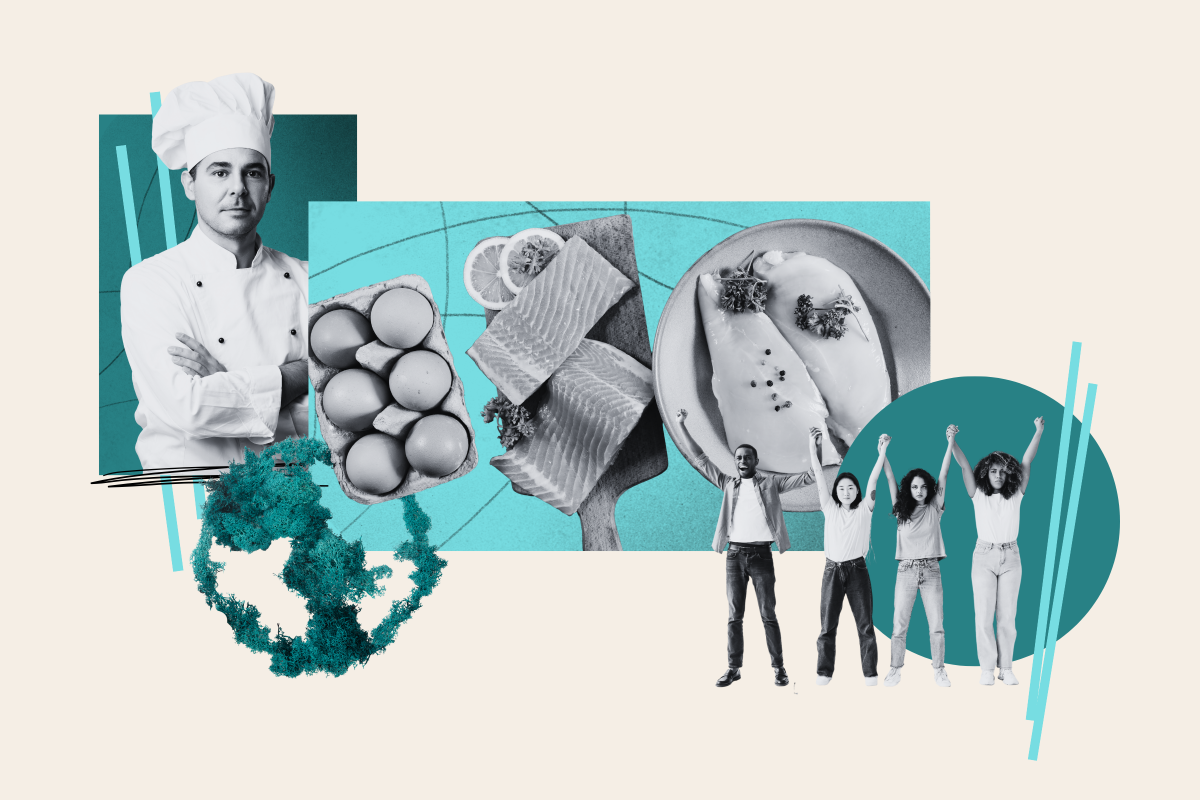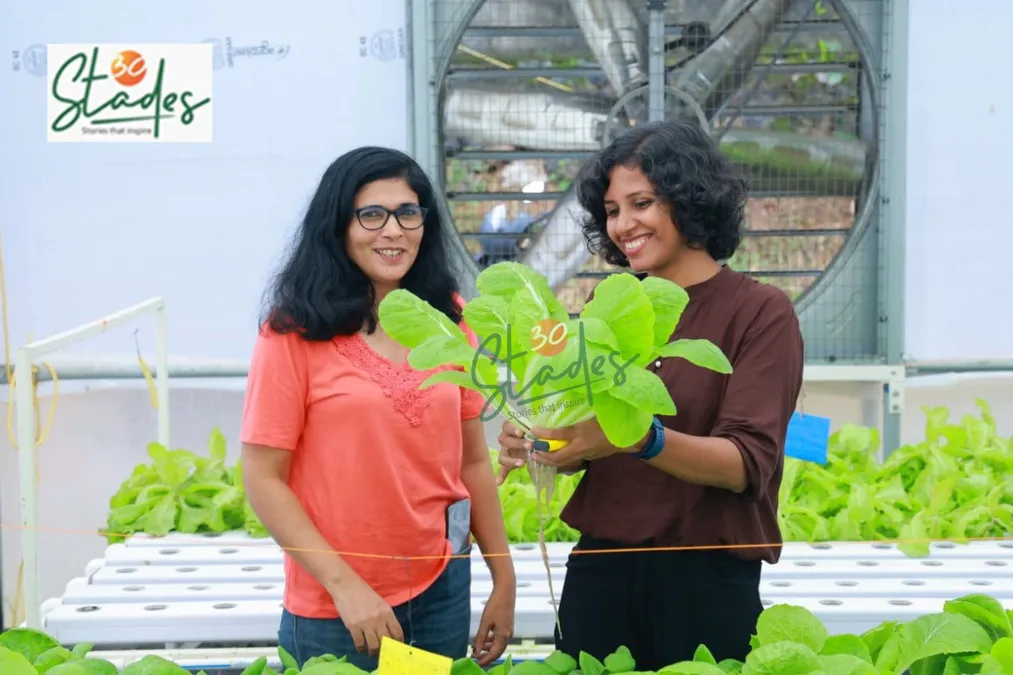
Food scientists are looking for ways to keep our favorite snacks crunchy, dairy producers are struggling to put enough cottage cheese on the shelves and consumers are spending more than $10 billion—all in the name of protein.
No macronutrient has been more disruptive to our diets. Last year, more than 6 in 10 Americans increased their protein intake, according to an April report from agricultural giant Cargill. And so far, that seems to have translated into a rise in meat consumption. In trying to get more protein into their diets, consumers are turning to beef, chicken and eggs. Cargill’s research found that 75 percent of Americans include animal protein in their diet, while 74 percent called meat an important part of that diet.
Now, climate activists are sounding the alarm. Meat production is notoriously bad for the planet, responsible for 14.5 percent of global greenhouse gas emissions and widespread deforestation. Adopting a vegetarian diet for just one year, on the other hand, can reduce an individual’s carbon footprint by up to 1.5 metric tons, according to the United Nations.
“The biggest risk right now is that—in this protein craze—people think ‘meat’ when they hear ‘protein,'” Eve Turow-Paul, the executive director of Food for Climate League, told Newsweek. Food for Climate League is a Chicago-based nonprofit working to make climate-smart food choices the norm.
Nearly 90 percent of U.S. adults inaccurately believe that it’s important to eat meat or other animal products to get adequate protein, according to a March survey from the Physicians Committee for Responsible Medicine and Morning Consult. More than 1 in 5, in fact, believe it’s not possible to build muscle while on a plant-based diet.
“The danger of this moment is that the people who control what goes onto menus and what food is served will make the same assumption that because there’s a protein movement, people just want meat,” she said. “That is not what people want.”
Speaking at a Climate Week NYC event hosted by Food Tank in late September, Turow-Paul said that research conducted by her nonprofit has found that consumers want more diverse and plant-based protein options.
A separate July survey conducted by the International Food Information Council also found that even though meat and poultry are the most popular sources of protein, with 65 percent selecting those as their preferred protein, 40 percent of respondents also ranked beans, peas and lentils as their preferred options.
You don’t need to do your own polling to see the trend. Just look at last year’s top YouTube recipes.
“There were no meat dishes,” Turow-Paul told the audience gathered at The Greene Space in downtown Manhattan. “It was dense bean salad. It was this smashed cucumber salad. It was also Travis Kelce’s mom’s cookies, but I mean, everything there, in my book, was pretty sustainable. I think this is a misnomer. Food culture is continuing to bend in a more sustainable direction.”
On Wednesday, Turow-Paul told Newsweek that while there are strong protein movements happening in both the “vegan, plant-based sphere” and in the conservative MAHA circles promoting animal-based diets, most Americans “are in the messy middle.” Those consumers, Turlow-Paul said, are the ones making lentil salads at home or picking up David’s Protein bars from their local convenience stores (There are 18 grams of protein in a cup of cooked lentils and 28 grams of protein in a David’s Protein bar).
The reality is that even with more plant-based protein on grocery shelves and an increase in consumer interest, the number of vegans and vegetarians in the U.S. has remained fairly stagnant since these types of diets rose in popularity during the early 2010s. In 2023, Gallup found that only 4 percent of Americans identified as vegetarian and just 1 percent as vegan—not far off from the figures that Gallup saw in 2012 or 2018, when five percent of Americans said they were vegetarian and 2 to 3 percent, respectively, said they were vegan.
“The problem with sustainability is that as a conversation, it has become very all or nothing,” Turlow-Paul told Newsweek. “People think that they need to give up all animal products, all dairy, all meat, in order to live sustainably. Or they think that they need to be purchasing packaged goods, whether it’s Beyond Meat or Impossible, et cetera.”
“We need to open up opportunities for imperfection,” she said. “For Gen Z, existing right now is really hard. It’s very hard to have hope and to really feel a sense of agency and I think this is an opportunity for us to engage younger generations. But again, it doesn’t need to be done with an all-or-nothing mindset. We need to allow for small shifts that add up to a really big difference.”
Some chefs are joining that effort by introducing new plant-based proteins to restaurants. Many realize that, as Dorothy Shaver, Unilever’s global food sustainability director, pointed out, “People try foods first in a restaurant, and then they’ll potentially try them at home.”
One of these chefs is Rasmus Munk, the man behind Copenhagen’s Alchemist, a two-star Michelin restaurant described by The New Yorker last year as “one of the most sought-after reservations in the fine-dining world.”
One dish that Munk has been working on features a butterfly.
“We’re farming them so they’re safe to eat, but this little butterfly, [which] we have [done] some scientific research on, contains 3.5 times more protein than chicken and it’s very easy to farm,” Munk said from the stage at Food Tank’s event.
Munk recognized that while it’s unlikely that consumers will see whole butterflies being sold on grocery store shelves, “maybe as a powder or protein and I think you could put it into other foods in the future.”
Asked why he wanted to become an agent of social and political change, Musk said that as a chef, he has “a lot of spotlight” that he can deflect onto a bigger issue, like climate change.
“Restaurants [are] very good communicator[s],” he added. “It’s a very good platform [for] introducing new things.”
Anne McBride, vice president of impact at the James Beard Foundation, told Newsweek that Munk is not alone. She said Wednesday that the chefs she works with are very engaged with the foundation’s advocacy efforts.
“In 2012, we started out with the Chef Bootcamp for Policy and Change because we recognized that chefs have a lot to say, and we wanted to help them organize and be able to send a really strong message about the issues they care about,” McBride said. “We have found that on the climate side, specifically, they’ve been extremely, extremely engaged with us.”
At Food for Climate League, Turow-Paul is working on a narrative change. She wants people to recognize that sustainable food does not have to be expensive nor hard to get your hands on. Sustainable food can look like rice, it can look like beans, it can look like a peanut butter sandwich.
“Sustainable food means you’re not wasting anything,” she said. “The way to reframe that might be that you’re maximizing your ingredients. If you’re the cook, you’re using everything out of what you have.”
In addition, she said, “sustainable food also means valuing your food. Valuing the effort that went into it, valuating the resources and the time and the energy.”
The path forward, per Turow-Paul, is to make sustainable food fun and delicious. She believes the real problem facing sustainability advocates is that they’re perceived as asking consumers to give up something they love to benefit the common good.
“That is not what this movement needs to be,” she said.
When it comes to the future of food, Turow-Paul said, “I don’t see protein as a risk for sustainable food systems. I see it as an opportunity.”
“The opportunity here is really shifting people’s perceptions of what protein is and pushing people beyond their gut reaction of ‘I need more protein and therefore I need to eat a chicken,'” she said.



